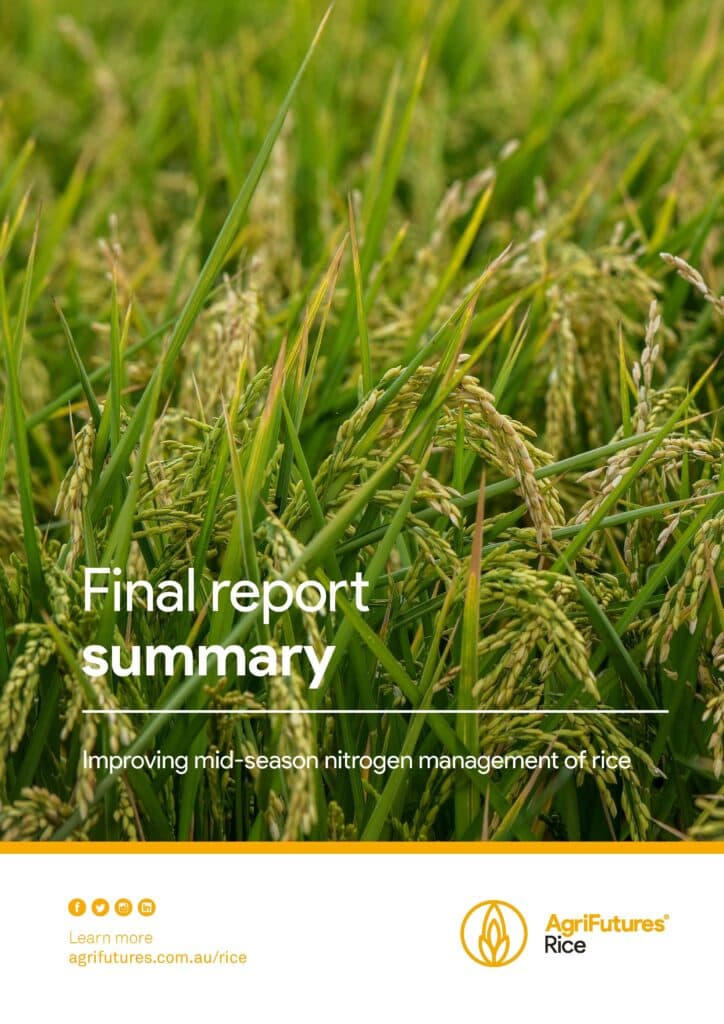The Australian rice industry is primarily based in the irrigated south-west region of New South Wales, with the major production areas around the towns of Leeton, Griffith, Coleambally, Finley and Deniliquin. In this region, the industry has the capacity to produce more than one million tonnes of rice a year from about 100,000 ha, and the annual farmgate value of the industry is $300 million, although the total value including export earnings exceeds $1 billion.
Rice is a valuable crop that provides numerous benefits to irrigated farming systems in this region. But its production is under pressure due to lower water availability, the associated increased cost of water, rising input costs such as nitrogen, and competition from other crops. To maximise water productivity, rice growers must use best practice for nitrogen management. Applying the wrong amount of nitrogen at panicle initiation (PI) leads to inefficient and uneconomic use of nitrogen. There is an increased risk of lodging from excessive nitrogen application, while reduced yield results when insufficient nitrogen is applied.
This report, funded by the AgriFutures Rice Program, presents research on the development of an efficient method for nitrogen management in rice that reduces the need for physical sampling of the crop. The system uses remotely sensed imagery to determine the spatial variability of crop nitrogen levels across a rice field. The report also highlights phenology modelling, which underpins the new two-stage PI date predictor for drill and delayed permanent water (DPW) crops, and maintenance of the near-infrared spectroscopy (NIR) instrument and calibrations, which support accurate nitrogen topdressing recommendations from the PI Tissue Test service.
It is important to continue investigation of all new satellite imagery sources for their suitability to provide reliable and stable PI nitrogen uptake predictions. For accurate PI nitrogen topdressing recommendations to be provided to growers without the need for sampling, the imagery must be consistent with high-quality atmospheric correction, acquired daily and affordable.





